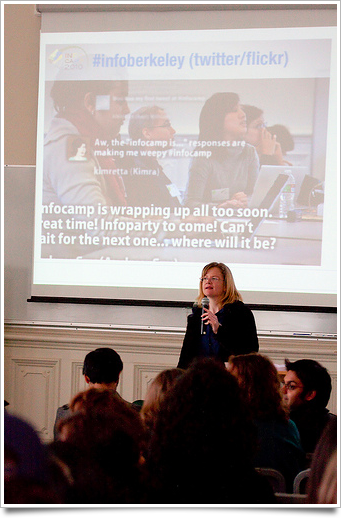No matter what service you provide, even the most well-intentioned invitation can be seen as a demand for time, effort, and attention. Given the lack of established protocols for interacting online, I submit a single cardinal rule-of-thumb for interacting with people, online or off:
Give before you ask.
The following story is not ultimately about Twine, or about Twitter. It’s an illustration of what happens when asking comes first in an increasingly crowded information ecosystem. It’s about relationships, requests, and demands—the subtle dance that characterizes the interplay between “social” and “information”. (Full disclosure: I have a close relative who works at Twine, and I’m an avid Twitter user, so I want both companies to succeed.)
Here’s the 30-second recap:
Twine implemented a feature to let its users connect with their Twitter followers. It did so by inviting them via direct message (DM); however, to Twine users it wasn’t 100% clear that DMs would be the mechanism.
People started receiving impersonal-sounding DMs from loose Twitter acquaintances inviting them to join Twine. This seemed like a spammy auto-DM campaign and incensed some high-profile Twitterers. When Chris Brogan blogged about it, the Twitter ecosystem lit up with largely negative reactions.
Nova Spivack, Twine’s CEO, responded. He engaged Chris Brogan immediately. He was personal, listened, and took responsibility. In my view, his response was spot-on. (Here’s their conversation—click “Show conversation” to see the whole thing.) Net result: the DM feature was disabled. (1)
Although Twine’s fumble was largely technical (the DMs were supposed to point to a more personal landing page, for instance), its approach to Twitter was misguided as well. Why? Because users felt pitched, not informed. Put another way, Twine didn’t give before it asked.
What would it look like for Twine to “give” first? One simple way would be to make it easier for Twine users to share what they’re doing on Twitter. Add a “Tweet” button so users can share what they’re reading with their followers, all without leaving Twine. It doesn’t sound like much, but it would reverse the dynamic between Twine and Twitter. Here’s what would happen:
- On the surface, Twine tweets would change from friend requests to “actual information”
- Visitors’ first impressions of Twine would improve. Instead of seeing a sign-up page on arrival, users would see Twine as in its real capacity, a source of information and discussion
- Some users would stay at Twine longer if they could tweet without breaking their flow
- Traffic would feel organic, not forced
- Traffic may grow more slowly, but pageviews would be more valuable
- Bottom line: users (of both Twine and Twitter) would feel respected, because the tweets they send or receive would be interesting, rather than asking them for a favor
All this from giving before asking.
In addition—but as a secondary option—it would be nice to see which of your Twitter connections are on Twine and connect with them there. (Twitter contacts who are already on Twine are more likely to reciprocate; those who are not members are likely to see the invitation as spam. The former should be encouraged, and the latter treated with care.)
I think Nova nails it with this comment: “Integrating external services with Twitter is a more subtle art than expected.” He’s right: the details are subtle. But the gross concept stands: give before you ask.
(1) Spivack blogged about the experience—you can read his thoughts here. And the Twine team officially responded here.

